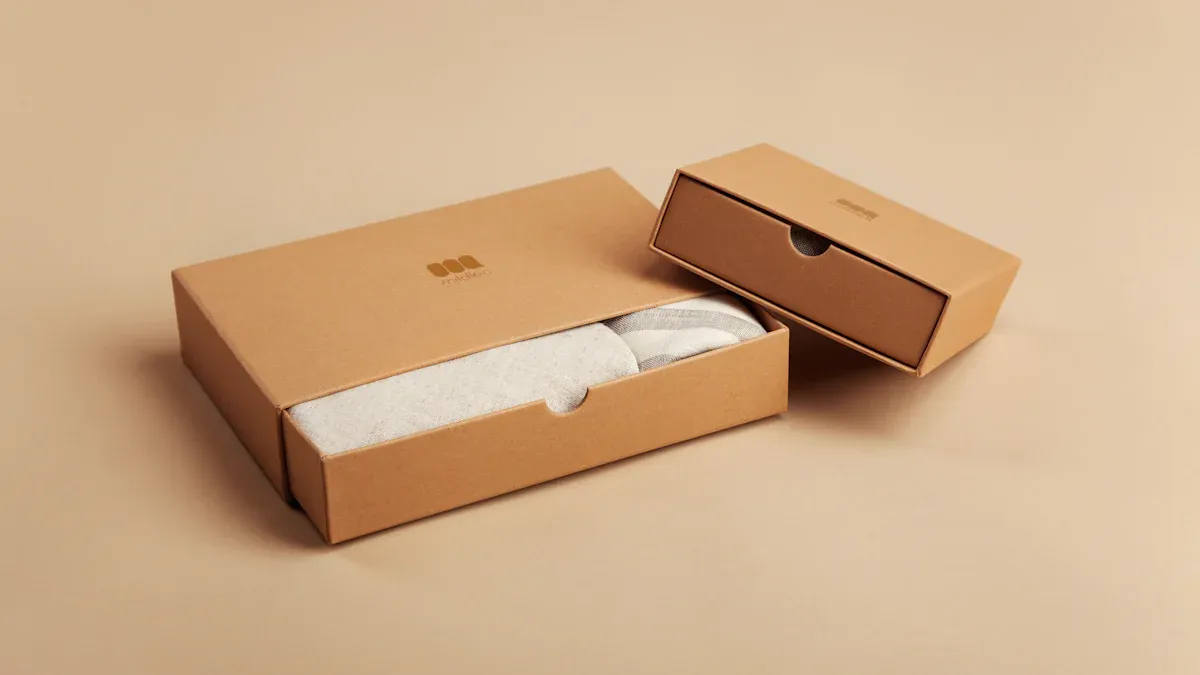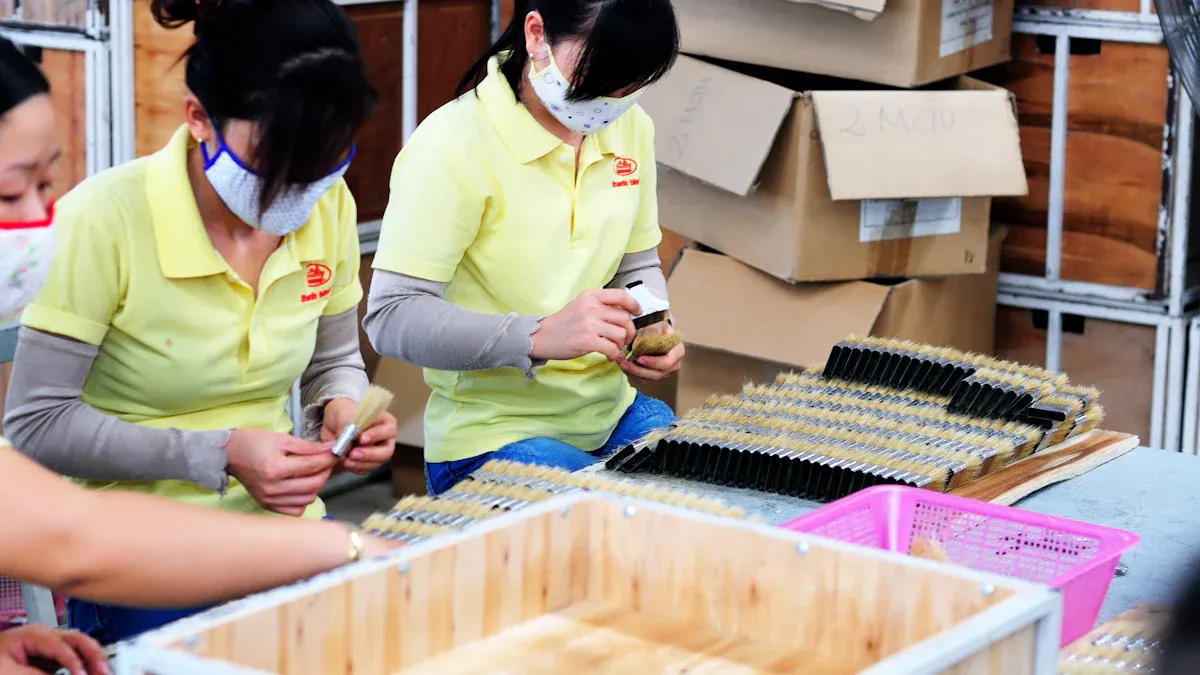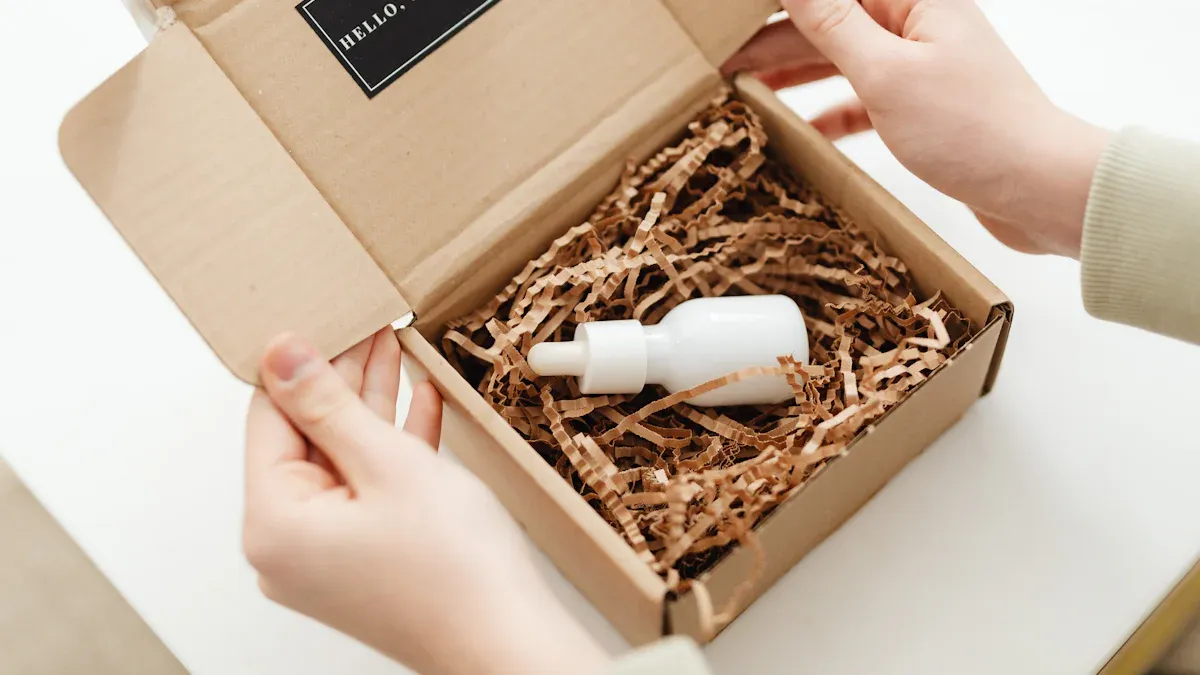
Custom boxes play a crucial role in shaping how consumers perceive your products. A well-designed custom packaging box enhances the appearance of your product, making it more appealing and helping your brand stand out on store shelves. In fact, about 72% of Americans believe that packaging design influences their purchasing decisions. Beyond aesthetics, custom boxes also ensure that your items remain safe during shipping, significantly reducing the risk of damage. They contribute to brand recognition and help keep your products top-of-mind for consumers.
By creating custom boxes tailored to your specific needs, you can enhance customer satisfaction. Custom packaging boxes featuring your logo showcase your creativity and add a unique personality to your brand. Whether you operate a small shop or a large corporation, custom boxes are essential for building connections with your customers and making your products memorable. As the demand for unique packaging continues to rise, now is the perfect time to explore how custom boxes can elevate your brand. For more information, feel free to check out our factory and learn about us.
Key Takeaways
Figure out what kind of packaging your product needs.
Pick a box style that fits your product's size and weight.
Use strong and eco-friendly materials to keep items safe.
Add colors, logos, and designs to show off your brand.
Test sample boxes to check if they work and improve them.
Identify Packaging Needs
Knowing what your packaging needs are is the first step to making great custom boxes. This helps your packaging match your product, brand, and what customers expect. Let’s break it into simple steps.
Define the Purpose of Custom Boxes
First, figure out why you need custom boxes. Do you want to protect breakable items during shipping, make your product look better on shelves, or create a fun unboxing experience? Each reason needs a different plan. For example:
Custom vape boxes focus on safety, showing you care about quality.
Fancy packaging builds loyalty, with 52% of people buying again from brands with good packaging.
Green custom boxes attract eco-friendly buyers, with 73% ready to pay more for sustainable choices.
By knowing the purpose, you can match your packaging plan to your business goals and trends.
Measure and Calculate Dimensions
Getting the right size is key for making boxes that fit well. Follow these steps to measure correctly:
Use a ruler or tape to measure your product’s length, width, and height.
Multiply these numbers to find the product’s volume.
Add 1/8 to 1/4-inch extra for padding or small differences.
Always measure inside the box to ensure a good fit. Correct sizing reduces waste and keeps your items safe during shipping.
Select the Right Box Style
Pick a box style based on your product and packaging needs. Common styles include:
Mailer Boxes: Great for online stores, strong, and offer a nice unboxing feel.
Folding Cartons: Light and cheap, good for store products.
Rigid Boxes: Perfect for fancy items, giving a classy look.
Think about your product’s weight, how fragile it is, and how it should look when choosing a style. For example, online shopping has increased the need for strong, light packaging to protect items during delivery.
Tip: Choose a box style that fits your brand. A good design makes your product look better and strengthens your brand image.
Choose the Best Materials
Picking the right materials keeps your products safe and looking good. It also helps match your brand’s values. Here’s how to choose wisely.
Compare Corrugated and Cardboard Choices
Corrugated cardboard is stronger and cheaper than regular cardboard. Its layers make it great for shipping heavy or fragile items. Plus:
It’s affordable and helps lower packaging costs.
Its strength gives businesses better value for their money.
It’s eco-friendly, often made from recycled materials.
Regular cardboard works for light items that don’t need strong protection. It’s not as tough as corrugated but is a good, low-cost option for stores.
Check Durability and Sustainability
Strong and eco-friendly materials are important. Weak packaging can cause damage and unhappy customers. Many people today prefer green packaging. Think about these points:
Details | |
Eco-Friendliness | Use recyclable or biodegradable materials to please eco-aware buyers. |
Cost | Pick materials that balance price and quality. Stronger materials save money by avoiding damages. |
Product Needs | Make sure the material suits your product, especially fragile or fancy ones. |
For luxury items, recycled corrugated cardboard can look good and meet green standards.
Match Materials to Product Needs
Your product’s size, weight, and fragility decide the material. For example:
Use corrugated cardboard for heavy or breakable items to keep them safe.
Pick lightweight cardboard for small, sturdy items to save on shipping.
For fancy products, go for high-quality materials that match a premium feel.
Also, choose materials that cut carbon footprints by 15-20% yearly and are 85% recyclable. This helps the planet and attracts eco-friendly buyers.
By choosing the right materials, you can protect your products, show your brand’s values, and make customers happy.
Design Custom Boxes

Making custom boxes that match your brand and product needs takes careful planning. This step ensures your packaging looks good and works well.
Make a Box Template
Start by creating a box template. This is like a guide showing the size, folds, and cuts needed to build the box. Follow these steps to make it work:
Pick a box style. Choose mailer boxes for online orders, shipping boxes for heavy items, or retail boxes for store shelves.
Adjust the size to fit your product perfectly. Leave room for padding if needed.
Work with a manufacturer to make a sample box. Test it to see if it fits and works as planned.
A good box template saves materials and keeps your product safe during delivery.
Add Your Brand and Design
Your custom boxes should show off your brand. Use bright colors, logos, and designs that match your brand’s style. Try these ideas to improve your design:
Add QR codes or AR features for fun interactions.
Use eco-friendly inks or recycled materials to attract green shoppers.
Add textures or hand-drawn designs for a fancy look.
Personalized boxes make your product special. For high-end items, use simple and classy designs to show elegance.
Use Design Tools or Get Help
You can design your box using online tools or hire a designer. Many tools let you drag and drop to create your design easily. If you want a professional touch, hire a designer who knows packaging. They can help you:
Pick the best colors and fonts.
Make sure your design works for printing.
Create a strong, matching look for your brand.
Spending on good design makes your custom boxes stand out and impress your customers.
Printing and Branding Options
Learn About Digital and Flexo Printing
Picking the right printing method depends on your needs. Digital printing and flexo printing are two common choices. Digital printing is great for small orders and custom designs. It creates sharp, colorful prints that make your boxes stand out. Plus, it skips the need for plates, saving time and money.
Flexo printing works better for big orders. It’s cheaper for large amounts and keeps colors consistent. It also produces boxes faster, making it ideal for bulk jobs. For example, if you need thousands of boxes with the same design, flexo printing is a smart pick. Think about how many boxes you need and how detailed the design is to decide.
Printing Method | Cost Benefits | Quality Features |
Digital Printing | Best for small, custom orders | Sharp prints with bright colors |
Flexo Printing | Great for large-scale production | Consistent colors and quick production |
Add Special Finishes
Special finishes make your packaging look and feel better. Things like shiny foil, raised designs, or textured surfaces give your boxes a fancy touch. These details make customers notice and enjoy your product more. For instance, a smooth finish or raised logo can make your box feel high-end.
Interactive features like QR codes or creative designs also improve your brand’s image. They help customers connect with your product and feel more excited to buy. Match these extras with your brand’s style and what your customers like.
Textures and shapes make boxes fun to touch.
Foil and raised designs make your brand feel premium.
QR codes and creative designs boost customer interest.
Keep Branding the Same
Having the same look for all your products builds trust. Your boxes should match your brand’s style and values. Use the same logos, colors, and fonts so people recognize your brand easily. This helps customers remember your products and choose them again.
Studies say 64% of people trust brands that share their values. By making sure your boxes match your brand, you leave a strong impression. Work with your design team to keep everything consistent, from printing to special finishes.
Prototype and Test

Making a prototype is an important step in creating custom boxes. It helps you check your design, find problems, and improve the packaging before making many boxes. This step makes sure your boxes work well and look good.
Create a Physical Prototype
A physical prototype shows how your box will look and work. It lets you test the size, shape, and design. Prototyping has many advantages:
It finds problems early, saving money on fixes later.
It meets industry rules, avoiding legal troubles.
It shows how users will handle the box, improving its use.
It makes the product stronger by fixing technical issues.
By making a prototype, you can solve these problems early. This leads to better production and a higher-quality box.
Test for Strength and Usefulness
Testing your prototype checks if it works in real-life situations. Try different tests to see how strong and useful it is:
What It Does | |
Functional Testing | Makes sure the box works as planned. |
Environmental Stress Screening | Checks if the box holds up in heat or moisture. |
Usability Testing | Watches how people use the box to find ways to improve it. |
Product Testing | Ensures the box meets quality and industry standards. |
These tests help you fix weak spots and make a stronger, better box.
Get Feedback and Improve Design
Getting opinions from users and team members helps make your box better. Use these methods:
Ask customers questions or give them surveys to learn their likes.
Watch how people use the prototype to spot problems.
Use feedback forms to gather ideas for changes.
Looking at this feedback helps you make smart choices. For example, you can change the size, materials, or design based on what people say. Improving your design makes sure your custom boxes meet customer needs and stand out.
By making, testing, and improving prototypes, you can create boxes that protect your products and boost your brand.
Finalize Production and Assembly
Work with a Manufacturer
Teaming up with a trusted manufacturer makes production easier. They help ensure your boxes are high-quality and ready on time. Manufacturers with design and production in one place work faster and keep quality consistent. This partnership also helps your brand get noticed and improves customer satisfaction.
Benefit | Explanation |
Better Brand Recognition | Custom boxes make your brand stand out during shipping. |
Happier Customers | A fun unboxing experience makes customers loyal and satisfied. |
Faster Production | In-house design and production speed up delivery and keep quality high. |
Tip: Pick a manufacturer with experience in your field. They can help you choose materials and designs that match your brand and product.
Choose DIY or Outsourced Assembly
Decide if you’ll build boxes yourself or hire help. DIY works well for small businesses with fewer orders. It gives you control and can save money if you have workers to help.
Hiring professionals is better for big jobs. They handle large amounts quickly and keep the quality consistent. Outsourcing lets you focus on other business tasks. Trusted suppliers follow industry rules, keeping your products safe and designs perfect.
Note: Think about your budget and needs before choosing. Outsourcing costs more but saves time and ensures great results.
Prepare for Large Orders
Planning ahead helps you make lots of boxes without wasting money. Start by guessing how many boxes you’ll need. This avoids making too many or too few. Good scheduling keeps deliveries on time and customers happy.
Efficient production reduces waste and saves money. For example:
Use eco-friendly materials to lower costs and help the planet.
Watch production closely to keep quality high and manage stock well.
Use resources wisely to avoid downtime and extra expenses.
Smart planning lets you make many boxes while staying on budget and keeping quality strong.
Tip: Work with your manufacturer to set a production plan that fits your goals. This teamwork keeps things running smoothly and ensures great results.
Making custom boxes for your business is simple and clear. Each step helps your packaging match your brand and product needs. From planning to production, every stage ensures strong, quality boxes. These boxes keep your items safe and make customers happy. Custom packaging also boosts your brand, making your products stand out. Design boxes that show your values and meet customer needs. Start now to improve your business and impress your customers.
FAQ
What are the benefits of using custom boxes for my business?
Custom boxes keep products safe and look great. They make unboxing fun and help customers remember your brand. They also lower shipping damage and support eco-friendly choices, which many people like.
How do I choose the right box style for my product?
Think about your product’s size, weight, and how fragile it is. Use strong mailer or corrugated boxes for shipping. For stores, folding cartons work well. Pick a box style that matches your brand and what customers expect.
Can I create custom boxes on a small budget?
Yes, you can! Start with simple designs and cheap materials like cardboard. Use digital printing for small orders to save money. Focus on your logo and colors to keep costs low but still look professional.
How do I ensure my custom boxes are eco-friendly?
Pick materials like recyclable or biodegradable cardboard. Use water-based inks for printing. Work with companies that care about the planet. Show your eco-friendly efforts on the box to attract green shoppers.
Do I need professional help to design custom boxes?
Not always. Online tools can help you make simple designs. For fancy or detailed boxes, hire a designer. They can make sure your colors, branding, and designs look perfect for printing.
Contact: Gavin
Phone: +8613809623005
E-mail: Gavin@mingspak.com
Whatsapp:+8613809623005
Add: 4#,Langxiedong Street,Changan Town, Dongguan,China 523850
We chat
